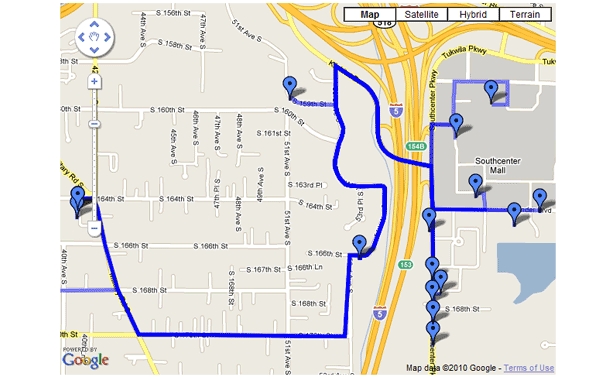I love the simplicity of Walk Score, the tool that calculates how walkable a neighborhood is and ranks it on a 100-point scale. For example, Washington Square in Manhattan gets a rare 100, while the rural town of Washington, Conn., gets an 18.
And I love how transparent Walk Score creator Mike Mathieu & Co. are about the site’s limits. It draws primarily from Google Maps data, and from the site’s How It Doesn’t Work page, we learn that it doesn’t account for lots of things that affect walkability, like street width, block length, the presence of sidewalks, freeways, hills, or even waterways. “If you live across the lake from a destination, we are assuming you will swim,” the site discloses.
Those are big drawbacks if you live in downtown Baltimore or anywhere else where water separates neighborhoods. So it’s good to hear that improvements are in the works:
We’re excited to share a sneak peek at the work we’re doing to address one of our top customer requests: using walking distances rather than crow-flies distances when calculating a Walk Score.
“Street Smart” Walk Score
Here’s an example of a house located across a freeway from a shopping mall. Walk Score currently gives this location a higher score than it deserves, because crow-flies distances assume you’ll walk across the freeway.

The new “Street Smart” Walk Score uses walking routes and gives this location a lower score.
 Maps: Walkscore.com
Maps: Walkscore.com
More:
The forthcoming “Street Smart” Walk Score also incorporates a number of metrics that urban planners use to measure pedestrian friendliness:
- Intersection density measures how many intersections there are in a square mile — more is better.
- Another metric is something called link/node ratio. This measures how many roads go into each intersection (e.g. a 4-way intersection is more walkable than a 1-way cul-de-sac).
- Since shorter length blocks are more pedestrian friendly than long mega-blocks, block length is another proxy for pedestrian friendliness.
It’s small stuff, sure. But incremental improvements add up.


